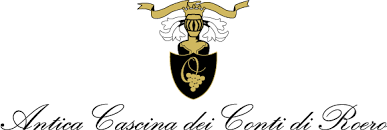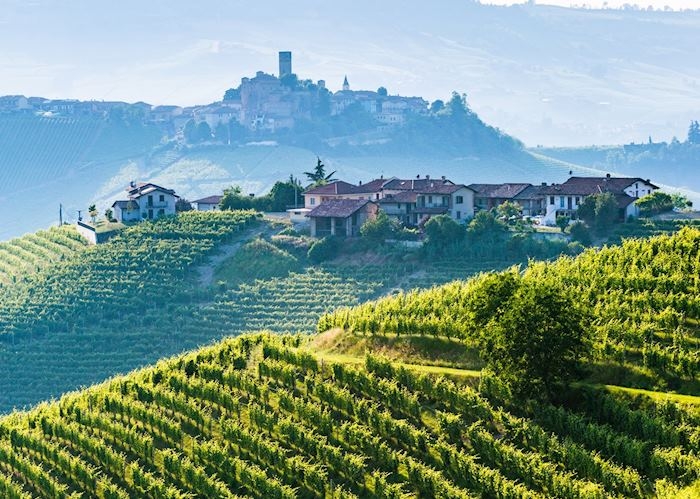Wines
Arneis Roero Sru Riserva DOCG
The production of this Arneis is made using the grapes of a single vineyard, called Sru, located in the town of Canale, where the soil is less sandy and more clayey. The wine rests one year in steel tanks, in contact with its fine lees. The wine has hints of honey and citrus and has a long persistence; it is also great to drink for years to come.
| Name: | Roero Arneis |
| Town of production: | Canale d’Alba |
| Variety: | 100% Arneis |
| Exposure: | east |
| Altitude: | 300 meters (above sea level) |
| Soil: | mix of sandy and clayey soil |
| Vine breeding: | Espalier-Guyot |
| Age of the vineyard: | 25 years |
| Harvest: | harvest of the grapes by hand in small 20 kg baskets, in middle September |
| Vinification: | destemming with cold maceration in contact with its skins using cryo-maceration system for 24 hours. Then racking with soft pressing. Slow fermentation between 15 ° and 16 ° degrees to ensure the preservation of the flavours. |
| Aging: | in steel tanks for 10 months at low temperature with frequent batonnage |
| Riserva: | on sale 16 months after the harvest |
| Aromatic profile: | intense brilliant straw yellow color; bouquet of white flowers, white currant, with notes of pineapple, pear and citrus. Evolving in notes with reminiscent of sage and mint. In mouth it has a decisive, solid and warm taste, with a long finish characterized by a pleasant mineral note. |
| Serving temperature: | 11 ° -13 ° C |
| Food pairing: | Piedmontese appetizers, first courses with vegetable sauces, fish risotto, grilled fish |
| Our tip: | seafood lasagna with turnip greens and shrimps |
| Best time to drink it: | outdoor lunch with friends |

Antica Cascina Dei Conti Di Roero
The Antica Cascina dei Conti di Roero estate was established in the early 1950s, when the Olivero family, Daniela’s parents, bought the Valmenera farmhouse in Vezza d’Alba. They added the land and vineyards already owned in the Certuti region, better known as Sru, in the municipal districts of Canale and Monteu Roero, now a UNESCO World Heritage core zone. In the beginning, it was a typical farm, cultivating fruit, vines and cereal crops, as well as keeping livestock.
The turnaround came in the early Seventies, when the decision was made to focus exclusively on viticulture and winemaking.
"The land is in our blood".
Our idea of wine growing can be explained in a single word: authenticity.
This is a concept that we apply in the vineyard, in the cellar and in our life. We have decided to believe in and use only native grape varieties: Nebbiolo, Arneis, Favorita and Barbera.

Piemonte
From Asti Spumante to Barolo, the wines of Piedmont are among Italy’s most prolific and best rated. The region’s pedigree is apparent in its 58 DOC and DOCG zones, and although it is only the sixth largest producer in terms of volume, it has the highest percentage of classified wines in all of Italy. No IGT wine area is identified. This westerly region that borders with Switzerland and France is influenced by the Alps and Apennines (the name Piedmont means "foot of the mountain") and its seasons are very distinctive. Hot, dry summers, cold winters, and temperate springs and autumns are common with occasional fog during harvest time.
Undoubtedly it is the red wines that lead the way in terms of quality and cellaring potential with wines made from the noble Nebbiolo grape. The DOCGs of Barolo, Barbaresco, Gattinara, Ghemme and Roero all represent the grape at its finest: they are complex, alluring wines with extraordinary depth and great ageing potential. Barolo ("king of wines and wine of kings") is made in the Langhe hills with its output of 6 million bottles a year far exceeding that of Barbaresco at less than 2.5 million.

Related Wines

Bonarda Piemonte Doc
(Light fizz style) We produce a small amount of this wine, n
View info
Nebbiolo d'Alba Doc
Grown in the vineyards of Cascina Valmenera, the heart of ou
View info
Nebbiolo Roero Riserva Vigna Sant'Anna DOCG
(100%NEBBIOLO) Vigna Sant’Anna is our greatest vineyard: one
View info
Sparkling Nebbiolo - Maria Teresa Rosè DOC
A single-grape sparkling wine made with Nebbiolo accordingly
View info
Bianco - Langhe Favorita Doc
This grape variety arrived in Piedmont after travelling alon
View info